The Parisian winter morning was cold and gray, but inside the metro train, I could barely notice it.
The PA announced the end of the line,Porte de Clignancourt. This was it, the last stop on Line 4 was my destination.
Just outside the station, the surrounding area gave the impression that the Métro had transported me to another city, this place had nothing to do with Paris, not glamorous Paris.
I still had fifteen minutes to spare before my appointment with the tour guide who would take me around one of the world’s most popular markets. I tried to warm my hands by rubbing them together and looked for a coffee place to replenish some energy.
The only nearby place to have some hot coffee was a battered, tired and dodgy-looking cafe, the kind of place that can almost invariably be found around metro stations in the outskirts of large cities. The clientele here consisted of some fishy-looking gentlemen, strange couples and idle taxi drivers.
After paying a small fortune for a coffee, I prepared to leave the premises and meet my Marché aux Puces guide and my friend, Lorena, travel editor and blogger for the Spanish version of Hello! magazine, who was coming along for the visit as well.
Discover the best areas to stay in Paris.
A City on Its Own
As we walked to the famous market of Saint-Ouen (known world wide as the Marché aux Puces or Paris Flea Market, we were introduced to the history of this unusual area of Paris.
In the late nineteenth century, clothing collectors, hand dealers and sellers of items of dubious origin of all kinds settled north of the walled city, a lawless area where they could practice their trades without having to pay the high taxes that came with working inside the walled city.
During its early years, the market was little more than a slum-like settlement that attracted the lower classes of society. Nothing to do with the gentrified arcades complex, frequented by Hollywood stars that we can see today.
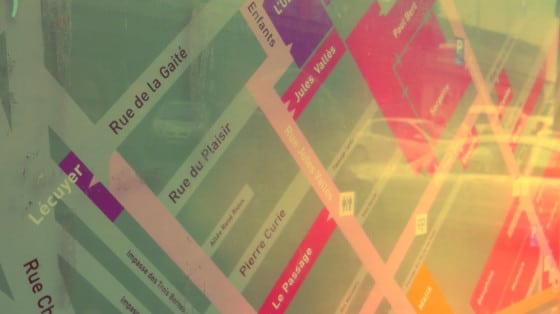
Its bustling atmosphere and bohemian character has been a source of inspiration for artists since its opening. Pablo Picasso is known to have wandered around here during his stay in Paris. More recently, the market became the setting for Woody Allen’s Midnight in Paris.
The market we see today is, however, several markets that grew next to each other. Marché des Rosiers, Marché Paul Bert, Marché Malassis, Vernaison, Malik or Biron, are some of them.
Each market is specialized in a product; antiques, clothing, books, art, coins, jewelry and countless other oddities make up most of the goods sold here.
Furnish Your Place
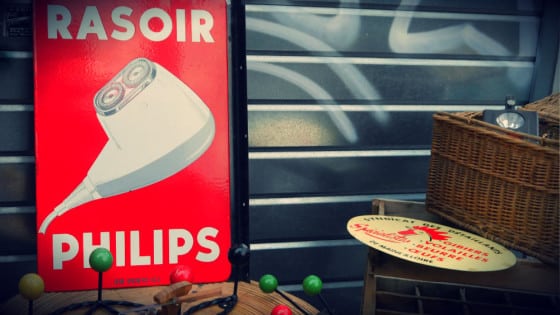
We started our visit at Vernaison and Biron Markets, both areas specialized in antiques with the Rue dels Rosiers as main walking street.
Walking through its covered narrow alleys means getting lost in a maze of prefabricated stalls that look a little more like a Brazilian shanty town than a market. In total, these two areas totaling over 500 stalls is the place to go whether you’re looking for a Louis XV chair or an Art Decó.
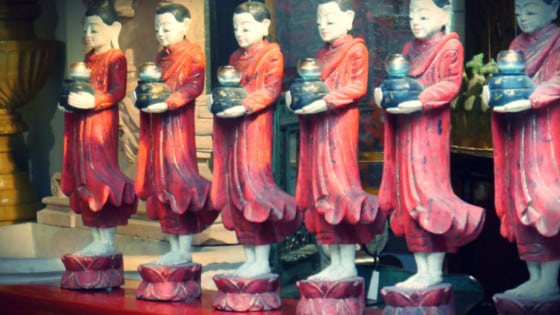
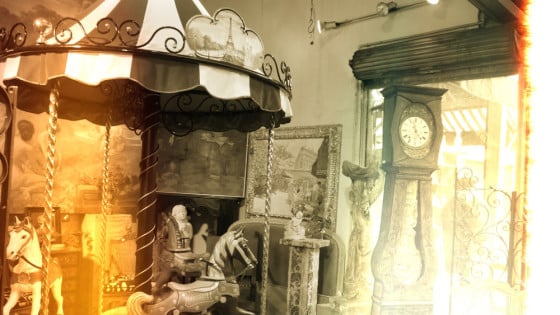
Carousels and Clocks
Getting Something to Eat
It’s noon and it is time to eat something, we try to grab a bite at Vernaison in Chez Louisette , a colorful brasserie that kitschy mixes baroque decor with a hanging disco-ball. It is impossibly crowded, so we decide to go to La Chope des Puces, a much simpler place where the highlight is the music. We drank wine, ate cheese and listened to some great jazz.
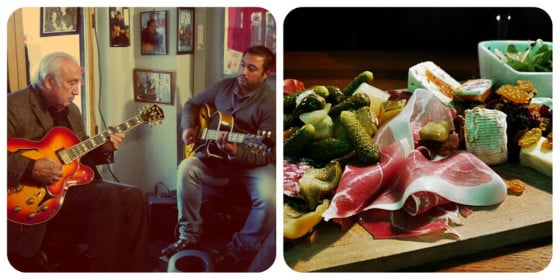
Get a vintage Chanel
The afternoon gets luxurious. Yves Saint Lauren, Christian Dior, Balmain, Chanel, entering the upscale shops at Marché Dauphine is like getting into the private dressing room of some early twentieth century actress.
After seeing the labels, do not expect real bargains, since most of them are unique pieces.
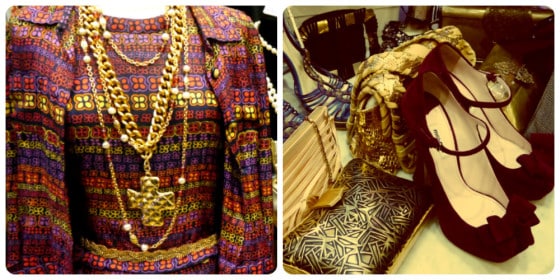
Chests, dolls and postcards
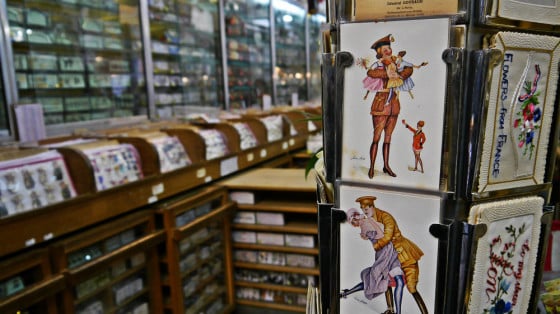
The Dauphine arcade has a modern layout and compared to other markets, is spacious and more comfortable, it has two levels and has several specialty shops ranging from vintage couture, antique trunks, posters, horrible porcelain dolls, postcards and stickers.
It starts to get dark and my tour has to come to an end. We wander through the strange Paul Bert market, a chaotic place with clustered buildings. Here, 220 stalls and their owners seem to inhabit peacefully playing cards.
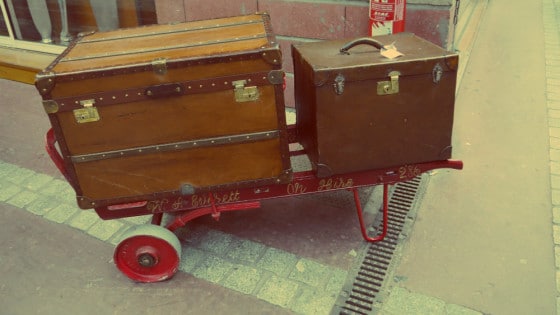
Where are the fleas?
There are 15 markets at Les Puces, of which I could only visited a few in a full day.
After I’m finished with the tour, my exhausted mind can only thing of one thing:
Why is it called a Flea Market?
Although its official name is Sant Ouen market, this shopping complex has been known since its inception as Marché aux Puces (flea market). This curious name was bestowed in a derogatory manner by the Parisian bourgeoisie of the time because of the (probably not totally unfounded) rumors that the goods sold there were infested with these and other parasites.
Interestingly, the name was exported into other languages and is now used in Ebglish to refer to any market selling old or second-hand goods.
Useful information
Schedules and how to get there
Saint-Ouen Market is open on Saturdays from 9:00 a.m. to 6:00 pm, Sunday from 10:00 a.m. to 6:00 pm and Monday from 11:00 a.m. to 6:00 pm
Metro Stops: Porte de Clignancourt (Line 4) / Garibaldi (Line 13)




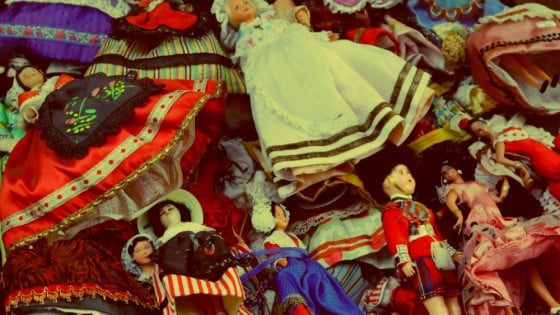
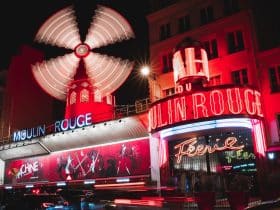
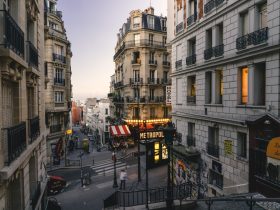




















Leave a Reply
View Comments